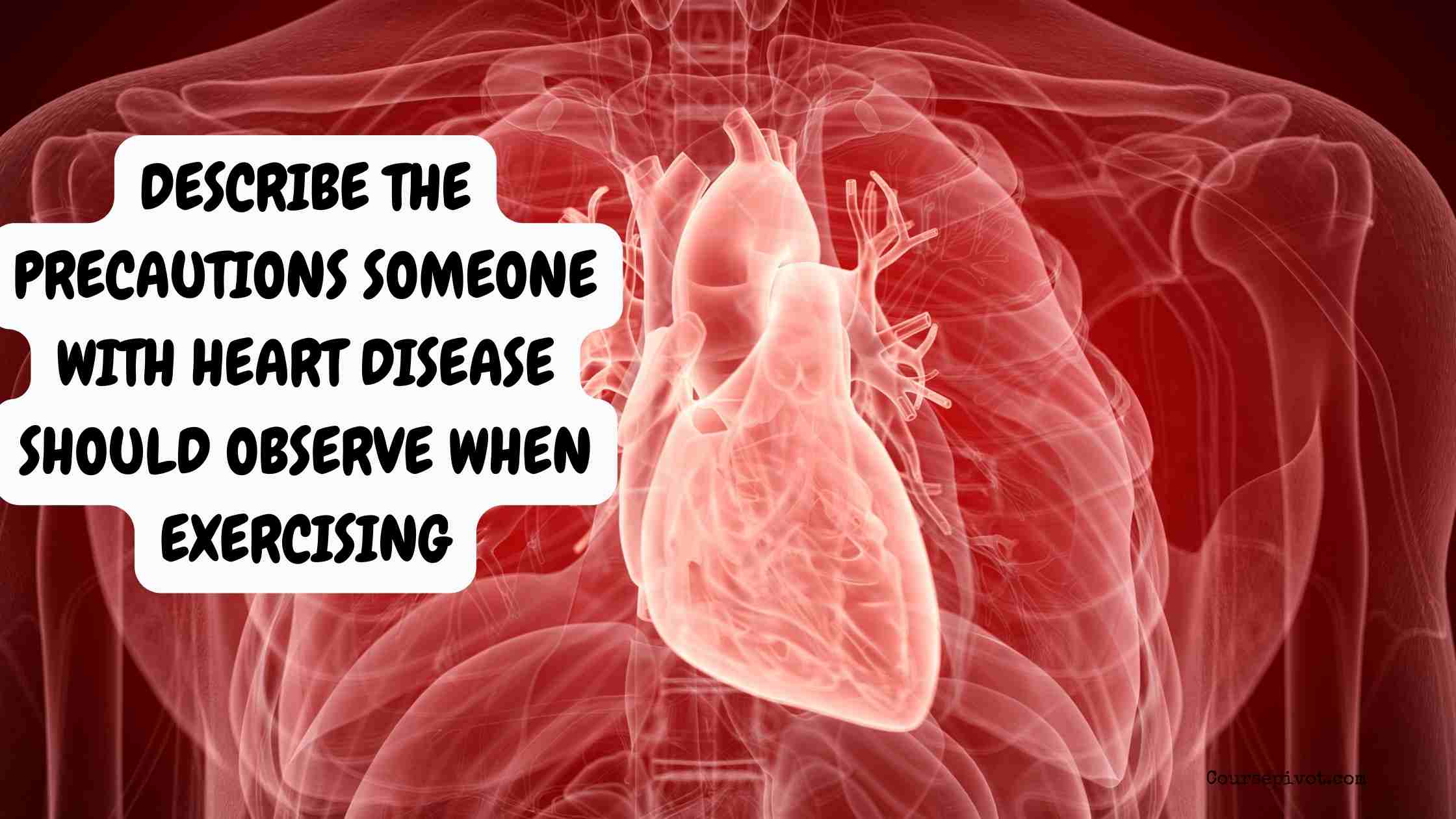
The Precautions Someone with Heart Disease Should Observe When Exercising
Exercise is essential for heart health—even for people who already have heart disease. In fact, with the right precautions, regular physical activity can strengthen the heart, lower blood pressure, improve circulation, and reduce stress.
Table of Contents
But that doesn’t mean jumping into intense workouts is safe. People with heart disease must be extra cautious to avoid overexertion or dangerous complications.
Here’s a clear and thorough look at the precautions heart patients should follow when exercising.
🩺 1. Get Medical Clearance First
Before starting any exercise plan, it’s critical to talk to your cardiologist or primary doctor.
- You may need a stress test or echocardiogram to assess your heart’s condition.
- Your doctor can help you create a safe exercise prescription tailored to your heart condition, medication, and limitations.
Never assume all forms of exercise are safe without medical advice—what works for others may not be right for you.
🚶♂️ 2. Start Slow and Gradual
Jumping into high-intensity training can be dangerous.
People with heart conditions should:
- Begin with low-intensity exercises like walking, stretching, or light stationary biking.
- Slowly increase duration, intensity, and frequency over time.
- Follow the “talk test” — if you can’t talk while exercising, you may be overdoing it.
💊 3. Understand Your Medications
Some heart medications, like beta blockers, diuretics, or calcium channel blockers, can affect:
- Your heart rate during exercise
- Blood pressure levels
- Fluid and electrolyte balance
It’s important to know:
- How your medication might change your response to physical activity
- Whether it makes you more prone to dizziness or fatigue
Always follow your doctor’s advice on timing of exercise in relation to medication.
Read our blog on Explain What Distinguishes a Stroke from a Heart Attack
🧘♀️ 4. Choose Heart-Friendly Activities
Safe and effective exercises for people with heart disease include:
- Brisk walking
- Water aerobics
- Yoga or tai chi (for balance, breathing, and relaxation)
- Cycling on a stationary bike
- Light resistance training
Avoid:
- Heavy weightlifting
- High-intensity interval training (HIIT)
- Contact sports or exercises with sudden bursts of effort (unless approved by a doctor)
💓 5. Monitor Your Symptoms Closely
Be aware of how your body feels before, during, and after exercise.
Stop exercising immediately if you notice:
- Chest pain or pressure
- Irregular heartbeat or palpitations
- Light-headedness or dizziness
- Shortness of breath that’s unusual for you
- Extreme fatigue or cold sweats
Keep a log of your symptoms, and report anything unusual to your doctor right away.
📈 6. Track Your Heart Rate and Intensity
Because people with heart disease have unique limits, using a heart rate monitor or fitness tracker can help you stay in your safe range.
- Your doctor can tell you your target heart rate zone.
- Don’t rely only on how you feel — learn how to recognize safe levels of exertion.
🧊 7. Stay Hydrated and Cool
People with heart conditions are more sensitive to heat and dehydration, especially when on diuretics.
- Drink water before, during, and after exercise.
- Avoid outdoor workouts on hot or humid days.
- Wear light, breathable clothing and take breaks as needed.
🕒 8. Warm Up and Cool Down
Warming up helps prepare your heart gradually. Cooling down helps your blood pressure return to normal slowly.
- Spend at least 5–10 minutes doing light movement before and after workouts.
- Stretch gently to avoid stiffness and support circulation.
🧠 9. Know When to Skip a Workout
There are days when it’s best to rest instead of pushing through.
Don’t exercise if you:
- Have a fever or chest infection
- Are feeling unwell or more tired than usual
- Have gained several pounds quickly (which could mean fluid retention)
- Notice swelling in your legs or feet
Listening to your body is just as important as moving it.
✅ 10. Consider Cardiac Rehab Programs
If you’ve recently had a heart attack, surgery, or diagnosis, ask your doctor about cardiac rehabilitation.
These are supervised programs that:
- Provide customized exercise routines
- Offer nutrition and lifestyle counseling
- Monitor your heart during workouts
- Help you build confidence and avoid injury
Summary: Safe Exercise with Heart Disease
| Precaution | Why It Matters |
|---|---|
| Get medical clearance | Ensures exercise is safe for your condition |
| Start slow | Prevents overexertion and reduces risk |
| Monitor symptoms | Helps you spot warning signs early |
| Choose safe activities | Keeps your heart working in a healthy zone |
| Track heart rate | Prevents overdoing it |
| Stay hydrated | Supports healthy circulation |
| Rest when needed | Avoids stress during illness or flare-ups |
Yes, you can and should exercise with heart disease—but it must be smart, safe, and supervised.
“Exercise isn’t about pushing limits—it’s about honoring them and gradually expanding your strength.”
With guidance, patience, and good communication with your healthcare team, exercise can become one of the most powerful tools in managing heart disease and living a longer, healthier life.
Cite this article
You can copy and paste your preferred citation format below.
Martin, L. & Arquette, E.. (2025, May 26). The Precautions Someone with Heart Disease Should Observe When Exercising. Coursepivot.com. https://coursepivot.com/blog/describe-the-precautions-someone-with-heart-disease-should-observe-when-exercising/



